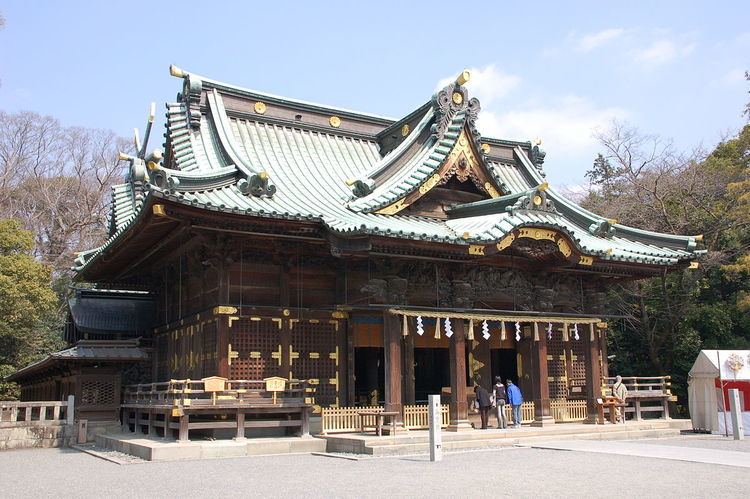Phone +81 55-975-0172 | Dedicated to Mishima Daimyōjin | |
 | ||
Website www.mishimataisha.or.jp Similar Mishima Station, Mishima Sky Walk, Mishima‑Hirokōji Station, Fujisan Hongū Sengen T, Mishima‑Tamachi Station | ||
The Mishima Taisha (三嶋大社) is a Shinto shrine in the city of Mishima in Shizuoka Prefecture, Japan. It is the ichinomiya of former Izu Province. The main festival of the shrine is held annually on August 16, and features yabusame performances.
Contents
- Mishima taisha summer festival 2012 shizuoka japan
- Enshrined kami
- History
- Notable structures
- Cultural properties
- References
Mishima taisha summer festival 2012 shizuoka japan
Enshrined kami
The primary kami of Mishima Taisha is the Mishima Daimyōjin (三嶋大明神), an amalgamation of Ōyamatsu-no-mikoto (大山祇命) and his consort Tsumihayae Kotoshironushi no kami (積羽八重事代主神)
Mishima Taisha also has numerous small subsidiary shrines dedicated to various kami within its precincts.
History
The date of Mishima Taisha’s foundation is unknown. Per shrine tradition and Nara period records, the predecessor of the shrine was originally located on Miyakej-ima but was transferred later from place to place, including Shimoda, and Ōhito, before being moved to the present site. In the early Heian period Engishiki records, the shrine is referred to as "Izu Mishima Shrine" located in Kamo county, which is in the southern part of Izu Peninsula.
After the establishment of Izu Province in the mid-Heian period, with its capital located near modern Numazu, the shrine was transferred to its present location, and initially was referred to as the "Shingū" ("new shrine").
After he was exiled to Izu, Minamoto no Yoritomo worshipped at Mishima Taisha for divine assistance in his struggle to overthrow the Heike clan in the Genpei War. After the successful establishment of the Kamakura shogunate, he rebuilt the shrine on a large scale, and worship of the Mishima Daimyōjin became popular with the samurai class. During the Sengoku period the kami of Mishima Taisha came to be associated with victory in battle, and the shrine was patronized by the Odawara Hōjō, the Imagawa clan and the Tokugawa clan.
During the Edo period, Mishima Taisha and its associated post town of Mishima-shuku prospered as a popular pilgrimage stop on the Tōkaidō highway between Edo and Kyoto. Its torii gate was depicted in an ukiyo-e print by Hiroshige. A calendar issued by the shrine was carried home by pilgrims from all over Japan, and was known as the "Mishima Calendar".
From 1871 through 1946, the Mishima Taisha was officially designated one of the Kanpei-taisha (官幣大社), meaning that it stood in the first rank of government supported shrines.
Notable structures
The Honden, a three-bay nagare-zukuri style building, has been reconstructed numerous times over the history of the shrine. The current building dates from 1866, having been rebuilt after the shrine was flattened in the Ansei Tōkai earthquake of 1854. It is registered as a National Important Cultural Property.
Cultural properties
Mishima Taisha has a small museum. The most important object is a Japanese lacquerware wooden box with maki-e decoration. The box contains numerous utensils and articles used for women’s cosmetics in the late Heian period and was donated to the shrine by Hōjō Masako. It is listed as one of the National Treasures of Japan.
In addition its Honden, Mishima Taisha also has four other items which are registered as National Important Cultural Properties:
In addition, a 1200-year-old Osmanthus fragrans tree in the shrine precincts is protected by the national government as a natural monument.
